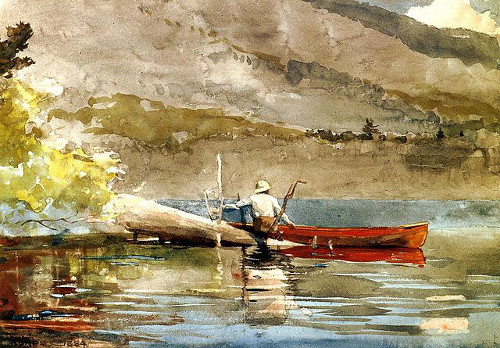
A puzzle from J.A.H. Hunter’s Fun With Figures (1956):
A man paddling a canoe upstream sees a glove in the water as he passes under a bridge. Fifteen minutes later, he turns around and paddles downstream. He passes under the bridge and travels another mile before reaching the rock from which he started, which the glove is just passing. If he paddled at the same speed the whole time and lost no time in turning around, what is the speed of the current?
|
SelectClick for Answer |
Say the canoeist paddled at x miles per hour through the water and the current moved at y miles per hour relative to the land. Fifteen minutes of paddling took the canoe x/4 miles from the glove, and the glove took 1/y hours to travel the 1 mile between the bridge and the rock. So after the canoeist turned around, the glove took (1/y – 1/4) or (4 – y)/4y hours to reach the rock. During that time the man moved x(4 – y)/4y miles through the water. We know that he was x/4 miles from the glove at the start of that interval, so x/4 = x(4 – y)/4y and hence 1 = (4 – y)/y and y = 2. The speed of the current is 2 miles per hour.
A simpler solution, sent in by reader Peter McLeod: “You need to switch reference frames. Take the reference frame of the river, i.e. that which is moving downstream at the speed of the current. In that frame, the canoeist passes the glove, spends fifteen minutes paddling away from it, then turns and paddles back towards it. How long does he take to reach the glove again? It must be fifteen minutes, since we know his paddling speed is constant. Hence, the canoeist passes the glove half an hour after he left it. We know that in that time, the glove travelled a mile, so the current is going at 2 mph!”
|

